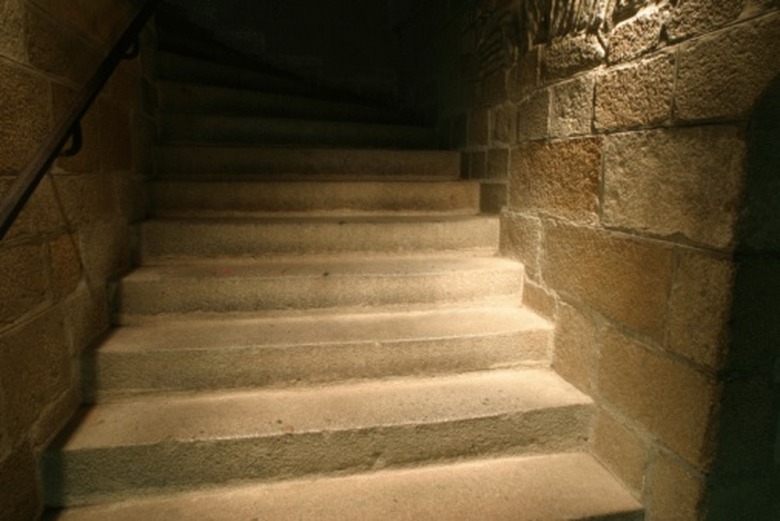How To Soak Up Water In The Basement
Things Needed
-
Rubber gloves
-
Wet vacuum cleaner
-
Thick towels
-
Pine-oil cleanser
-
Bucket
-
Dehumidifier
Tip
Throw out floor padding, as it cannot be salvaged after water damage, according to Flood Safety.
Wash the wet towels after use to prevent mildew from growing on the towel's fibers.
A flood in your basement caused by heavy rainfall is a leading cause of mildew and mold that damages your belongings and affects your health. The key to reducing mold and mildew is by cleaning up as much of the water as possible, as well as gradually drying the basement's floor to prevent further damage, according to FloodSafety.org. Wood floors in the basement are susceptible to cracking and splitting if they are quickly dried out due to the wood expanding when exposed to moisture, while carpeting requires ventilation to remove moisture.
Step 1
Put on rubber gloves prior to handling water-damaged items, and turn off your home's power to prevent electrocution.
Step 2
Vacuum up the basement floor with a wet vacuum cleaner and pine-oil cleanser to remove water. Wet vacuum cleaners are intended for sucking up water, which would normally cause permanent damage to a normal vacuum cleaner.
Step 3
Lay down thick towels to soak up water on the floor. Thick towels absorb water better than thin towels, and reduces the need to use as many towels to remove moisture.
Step 4
Leave the towels on the basement floor for 3 to 5 minutes, wring them out in the sink and lay them down again to pick up more water. If you are unable to use towels, lay down old clothing to absorb the water on the floor.
Step 5
For wood floors, mop the floor with a damp mop, squeeze the absorbed water into an empty bucket.
